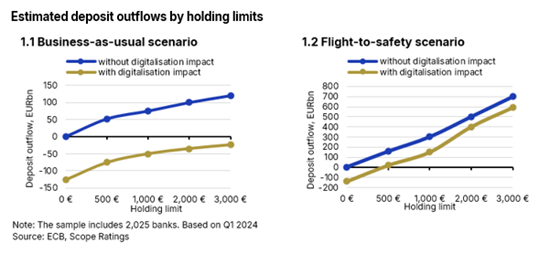Announcements
Drinks

Europe’s digital finance transformation: implications for financial autonomy and market resilience
The digital euro, euro stablecoins and digital bonds offer distinct routes to the digitisation of money and capital markets and signal a structural shift towards a fully tokenised financial ecosystem that is set to reshape Europe’s payment ecosystem over the medium term.
The digital euro offers structural advantages such as legal tender status, ECB backing, financial inclusion and support for online and offline payments. Regulated euro stablecoins, meanwhile, will drive faster innovation by delivering instant, low-cost, programmable payments and cross-border settlement, and positioning themselves as a trusted European standard and an alternative to US dollar stablecoins.
“The digital euro and euro stablecoins have the potential to enhance client engagement at the same time as providing a credible alternative to other global payment systems, particularly those linked to the US dollar or managed by US institutions,” said Milya Safiullina, an analyst in Scope’s financial institutions team. “At the same time, competition in payments is intensifying, as incumbent payment providers adapt their business models and European banks accelerate their own stablecoin initiatives.”
We expect moderate to high adoption potential for the digital euro. Bank-issued euro stablecoins under the Markets in Crypto-Assets Regulation should grow steadily in Europe, although those issued by Electronic Money Institutions (EMIs) will likely see limited uptake. A key uncertainty lies in how quickly the euro stablecoin infrastructure matures. If progress lags, the US dollar’s dominance could persist by default.
The ECB’s decision, expected this month, on whether it moves to the next stage of preparation for the digital euro should set the tone for potential launch toward the end of the decade. “Questions on design, regulation, and adoption might cause delays, but these are likely to be temporary. In the long run, we believe the digital euro will be important in underpinning monetary and financial stability, ensuring that Europe’s core settlement asset remains sovereign and European rather than privately or foreign issued,” Safiullina continued.
Risks and opportunities for European banks
The introduction of the digital euro and euro stablecoins poses clear risks to European banks but it also presents tempting opportunities. ECB simulations indicate that while the digital euro will have a limited impact on bank deposits under normal conditions, deposit outflows could, in a flight-to-safety scenario, be EUR 699bn with a EUR 3,000 holding limit, equivalent to 8.2% of retail sight deposits. On profitability, changes in net interest income are limited in a business-as-usual scenario but the estimated decline in NII is 18bp with a EUR 3,000 limit, excluding digitalisation effects and other potential positive developments.

“On the positive side, banks may be able to recapture fee pools by offering value-added services such as digital wallets, custody and settlement,” Safiullina noted. “They could also broaden their client propositions through programmable payments using stablecoins while achieving efficiency gains in operations and settlement processes and contributing to greater financial inclusion. And by linking digital bonds with the wholesale digital euro, banks could generate broader revenue streams in custody and issuance.”
Overall, we expect a gradual adoption path for European banks, with meaningful business-model impacts likely to materialise between 2026 and 2030. We believe banks’ ability to balance the integration of the digital euro with stablecoin innovation will be a key determinant of medium-term profitability, competitiveness and market positioning.
Download the full report here.






